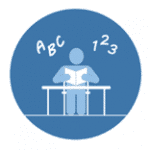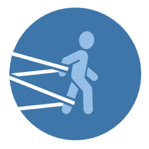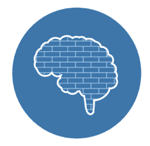Why A Competency-Based System Is Needed: 10 Ways the Traditional System Contributes to Inequity
Education Domain Blog
This is the third post in the blog series on the report, Quality and Equity by Design: Charting the Course for the Next Phase of Competency-Based Education. See the first post and second post.
Before exploring key issues in a competency-based system, it is valuable to unpack why the traditional system is an obstacle to creating high-achieving schools and equitable outcomes.
The strategies used by districts in response to state accountability exams under No Child Left Behind (NCLB), including one-size-fits all instructional strategies and delivering grade level curriculum regardless of what students know, exposed the traditional system for what it is: a sorting system. Despite implementing a series of education reforms and programs, many schools struggle to produce better outcomes largely because the traditional system is not set up to do so. Despite teachers’ persistent best efforts to support every student, the traditional system passes students on before they have mastered each stage of learning. Those who have mastered the skills continue on a path towards graduation and college. For those who have not, little is offered to help them learn what was expected. The result is a new set of students each year who may not have the necessary prerequisite skills and knowledge to take on the content offered by each successive year’s teachers. This sets up teachers and students alike for failure. This sorting function of traditional education is exacerbated by unequal and inequitable school resources that continue to haunt the education system.
10 Flaws in the Traditional System
The traditional system is simply not designed to produce the goals we have set for it, or that our children, communities and nation so desperately need and deserve. There are ten primary flaws in the traditional system that can be corrected by redesigning the system for success in which all students achieve mastery. These flaws include that the traditional system:
 Is focused on a narrow set of academic outcomes and fails to recognize that student success is dependent on a full range of foundational skills, including social-emotional skills, and the application of skills. Competency education is designed to help students learn academic knowledge, the skills to apply it and lifelong learning skills that are needed to be fully prepared for college, career and life.
Is focused on a narrow set of academic outcomes and fails to recognize that student success is dependent on a full range of foundational skills, including social-emotional skills, and the application of skills. Competency education is designed to help students learn academic knowledge, the skills to apply it and lifelong learning skills that are needed to be fully prepared for college, career and life.

Is time-based. Schools batch students by age and move them through the same content and courses at the same pace. Students advance to the next grade level after a year of schooling regardless of what they actually learned. Competency-based education is based on learning: students must demonstrate mastery of learning, with schools monitoring pace and offering additional supports to meet time-bound targets.
 Uses academic grading practices that can often send misleading signals about what students know by reflecting a mix of factors, including behavior, assignment completion and getting a passing grade on tests, not student learning. Grading in competency education is designed to communicate student progress in learning academic skills and content as well as the skills they need to be lifelong learners.
Uses academic grading practices that can often send misleading signals about what students know by reflecting a mix of factors, including behavior, assignment completion and getting a passing grade on tests, not student learning. Grading in competency education is designed to communicate student progress in learning academic skills and content as well as the skills they need to be lifelong learners.
 Relies upon a bureaucratic, hierarchical system that perpetuates traditional roles, cultural norms and power dynamics that doesn’t support inclusivity and cultural responsiveness. Competency education seeks to create an empowering, responsive system that is designed to build trust and challenge inequity.
Relies upon a bureaucratic, hierarchical system that perpetuates traditional roles, cultural norms and power dynamics that doesn’t support inclusivity and cultural responsiveness. Competency education seeks to create an empowering, responsive system that is designed to build trust and challenge inequity.
 Is built on a fixed mindset — the notion that people’s “abilities are carved in stone”. In contrast, a competency-based education system is built upon a growth mindset with a belief that all children can learn with the right mix of challenges and supports.
Is built on a fixed mindset — the notion that people’s “abilities are carved in stone”. In contrast, a competency-based education system is built upon a growth mindset with a belief that all children can learn with the right mix of challenges and supports.
 Depends on extrinsic motivation. Competency education fosters intrinsic motivation by activating student agency and providing multiple opportunities for learning to the same high standards.
Depends on extrinsic motivation. Competency education fosters intrinsic motivation by activating student agency and providing multiple opportunities for learning to the same high standards.
 Emphasizes covering the curriculum and fails to reflect the learning sciences about what we know about how children learn. In competency-based education, everything should be rooted in what we know is best for students in terms of engagement, motivation and learning.
Emphasizes covering the curriculum and fails to reflect the learning sciences about what we know about how children learn. In competency-based education, everything should be rooted in what we know is best for students in terms of engagement, motivation and learning.
Is organized to efficiently deliver curriculum and assessing students’ proficiency at low levels such as memorization and comprehension of content knowledge rather than applied learning and mastery. Competency-based education is organized to personalize learning and support the development of higher order skills such as analysis, evaluation and problem-solving.
Has high variability in how teachers determine proficiency in traditional settings. Competency-based systems build educator capacity to make judgments of student mastery to the same high standards and calibrated for consistency with other teachers.
Ranks and sorts students creating “winners” and “losers” and perpetuating patterns of inequality in society. Competency-based education meets students where they are to ensure that each one can be successful to the same high college- and career-ready standards.
The result of the traditional system is educational inequity. There are many ways to measure educational outcomes. However, rates of college and career readiness provide one insight into how we are doing at ensuring historically underserved students receive an education that prepares them for success. In New York, for example, 76.3% of New York students from the class of 2014 took the SAT. Of these SAT test-takers, 39.2% (60,611 students) met the SAT College and Career Readiness Benchmark. The number of students not meeting this one benchmark is especially acute among underrepresented minority students:
- 14.1% of New York’s African American SAT takers met the benchmark.
- 19.3% of New York’s Hispanic SAT takers met the benchmark.
- 24.5% of New York’s Native American SAT takers met the benchmark.
These troubling inequities are similar to those in other districts and states across the nation.
Traditional systems determine their work “complete” when students meet the number of credits required for high school graduation despite the persistent inability to adequately prepare so many students for success in college, career and life. Time-based credits have allowed districts to graduate students from high school with only middle school skills or worse. Transcripts listing courses say little about academic skills, and students bear the cost — 68% of those starting at public 2-year institutions and 40% of those starting at public 4-year institutions took at least one remedial course.
Another way to think about the equity of the education system is to consider opportunity gaps. Research at Stanford University looked at academic achievement and found that:
- The most and least socioeconomically advantaged districts have average performance levels more than four grade levels apart.
- Average test scores of black students are, on average, roughly two grade levels lower than those of white students in the same district; the Hispanic-white difference is roughly one-and-a-half grade levels.
The technique to determine achievement and identify inequity that is most relied on today is the use of summative exams, designed to support accountability policies, based on grade-level expectations. NAEP’s data reminds us that only one-third of our students test at proficient or above in eighth grade math, reading and science. Breathtakingly shocking is that 13% of black students are proficient or above in eighth grade math and 16% in eighth grade reading. Or is it really so shocking? If the traditional education system is designed to sort students rather than help all students learn, why would we expect results different than these?
Schools and districts across the country are shifting away from this traditional K-12 education system toward personalized, competency-based systems. They are redesigning their systems and structures so that they are fit for the intended purpose of our education system — to help all students achieve at the highest levels in college, career and life. A competency-based structure ensures students are reaching proficiency every step of the way — on each standard, in each unit, in each course and in each performance level.
Follow this blog series for more articles charting the course for the next phase of competency-based education, or download the full report:
- CompetencyWorks Releases New Report on Quality and Equity by Design: Charting the Course for the Next Phase of Competency-Based Education
- Readiness for College, Career and Life: The Purpose of K-12 Public Education Today
More resources:
- The Nation’s Report Card
- Article: Local education inequities across U.S. revealed in new Stanford data set
- Report: In Pursuit of Equality: A Framework for Equity Strategies in Personalized, Competency-Based Education (CompetencyWorks)
- Report: Remedial Coursetaking at U.S. Public 2- and 4-Year Institutions: Scope, Experience, and Outcomes (National Center for Education Statistics, 2016)
- Report: The Graduation Facade (StudentsFirstNY)
- Article: How Praise Became a Consolation Prize


